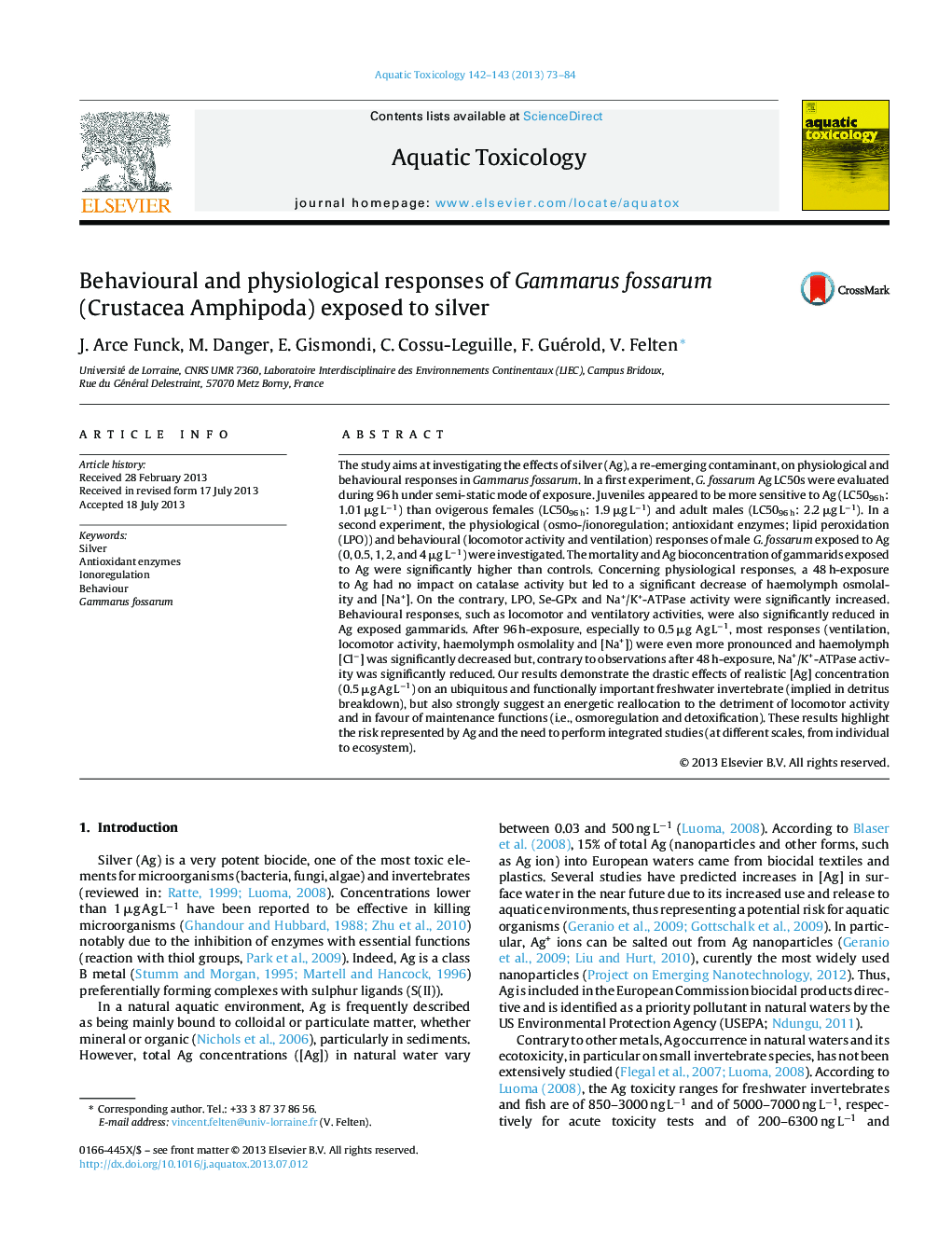| Article ID | Journal | Published Year | Pages | File Type |
|---|---|---|---|---|
| 4529425 | Aquatic Toxicology | 2013 | 12 Pages |
•Gammarus fossarum's juveniles are more Ag-sensitive than ovigerous females and adult males.•Ag induces drastic effect on survival, lipid peroxidation, iono-/osmoregulation, and reductions in ventilation and locomotion.•Effects are reported at environmentally realistic [Ag].•Compensatory mechanisms are activated after a 48 h-exposure (Na+/K+-ATPase and Se-GPx activities), but are overwhelmed after a 96 h-exposure.•Energetic reallocation in favour of maintenance functions (osmoregulation, detoxification) seems to be detrimental especially for locomotion.
The study aims at investigating the effects of silver (Ag), a re-emerging contaminant, on physiological and behavioural responses in Gammarus fossarum. In a first experiment, G. fossarum Ag LC50s were evaluated during 96 h under semi-static mode of exposure. Juveniles appeared to be more sensitive to Ag (LC5096 h: 1.01 μg L−1) than ovigerous females (LC5096 h: 1.9 μg L−1) and adult males (LC5096 h: 2.2 μg L−1). In a second experiment, the physiological (osmo-/ionoregulation; antioxidant enzymes; lipid peroxidation (LPO)) and behavioural (locomotor activity and ventilation) responses of male G. fossarum exposed to Ag (0, 0.5, 1, 2, and 4 μg L−1) were investigated. The mortality and Ag bioconcentration of gammarids exposed to Ag were significantly higher than controls. Concerning physiological responses, a 48 h-exposure to Ag had no impact on catalase activity but led to a significant decrease of haemolymph osmolality and [Na+]. On the contrary, LPO, Se-GPx and Na+/K+-ATPase activity were significantly increased. Behavioural responses, such as locomotor and ventilatory activities, were also significantly reduced in Ag exposed gammarids. After 96 h-exposure, especially to 0.5 μg Ag L−1, most responses (ventilation, locomotor activity, haemolymph osmolality and [Na+]) were even more pronounced and haemolymph [Cl−] was significantly decreased but, contrary to observations after 48 h-exposure, Na+/K+-ATPase activity was significantly reduced. Our results demonstrate the drastic effects of realistic [Ag] concentration (0.5 μg Ag L−1) on an ubiquitous and functionally important freshwater invertebrate (implied in detritus breakdown), but also strongly suggest an energetic reallocation to the detriment of locomotor activity and in favour of maintenance functions (i.e., osmoregulation and detoxification). These results highlight the risk represented by Ag and the need to perform integrated studies (at different scales, from individual to ecosystem).
